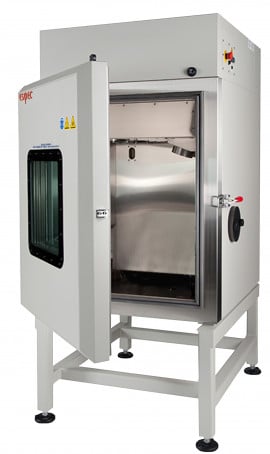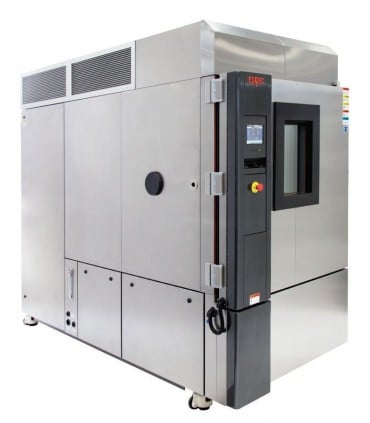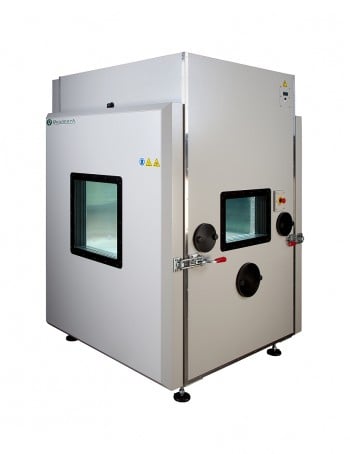HALT for Telecommunications Industries
Companies that design and build telecommunications equipment for today’s markets face a unique challenge. The requirement to achieve NEBS Level 3 certification and meet the “Carrier Class” 99.999% up time requirements demanded by the industry means that designs must be ruggedized and processes controlled to unprecedented levels. To repeatedly design and manufacture products that have down times of less than 26 seconds per month, companies must use powerful reliability tools and processes. These requirements reflect the extreme costs associated with downtime in this equipment. The loss of communications capabilities in any infrastructure, from a small office to a city, can be catastrophic. When field repairs at tower sites become necessary, the cost of repairs can be extreme as well. A company that experiences reliability problems with a product in the field may face a devastating mandatory recall and replacement of product. The NEBS Level 3 testing in itself is an expensive procedure. Finding a design issue during this process can mean stopping to make design changes, then repeating parts or all of this costly, time consuming testing. This can drive development costs up and delay the introduction of product into the field. Top tier telecommunications companies around the world use ESPEC HALT and HASS chamber systems to help them meet these stringent reliability requirements. HALT’s ability to expose flaws related to bonding and soldering of SMT devices is particularly valuable when testing the large, densely populated boards used in this equipment. But one of the more valuable aspects of HALT in this application is its surprising effectiveness in finding software related failures. In a study done by telecommunications equipment provider Allied Telesyn, 28% of the failures found in HALT were attributable to software problems [1].
When components in the system are driven to their functional limits, software problems related to tight timing issues, voltage level tolerances and other software/hardware interface problems can become repeatable and correctable. These problems are the ones that cause intermittent, hard to detect issues that can plague a field reliability program. And HALT will find these software and hardware issues before NEBS level 3 testing has even started. Of course, creating a well designed product is only half the battle. Maintaining Carrier Class reliability in high volume production is just as challenging. Used in production, the extreme temperature and vibration levels of HASS can safely provide the stresses necessary to drive out new weak links in the product that are unwittingly induced by supplier, process or assembly changes. By continuously re-verifying the level of ruggedization achieved by HALT, HASS ensures that every product shipped maintains the reliability levels required by this demanding industry.
Related Products from ESPEC

Qualmark HALT Systems
Qualmark offers the industry's most popular HALT chambers
(Highly Accelerated Life Testing)
- Up to 100°C/min., -100 to 200°C
- Six degree-of-freedom vibration / repetitive-shock system
- Six chamber sizes witth tables from 18"x18” to 48”x100”
See all HALT Models

Non-Nitrogen HALT Systems
Conduct HALT programs with a high performance cascade refrigeration system
- 15°C/min change rates (without LN2)
- -70 to 180°C temperature range
- Acceleration: 7 - 75gRMS (bare table)
The melding of ESPEC and Qualmark technologies
See EQ HALT models
 ESPEC North America, Inc. (Corporate office)
ESPEC North America, Inc. (Corporate office)


